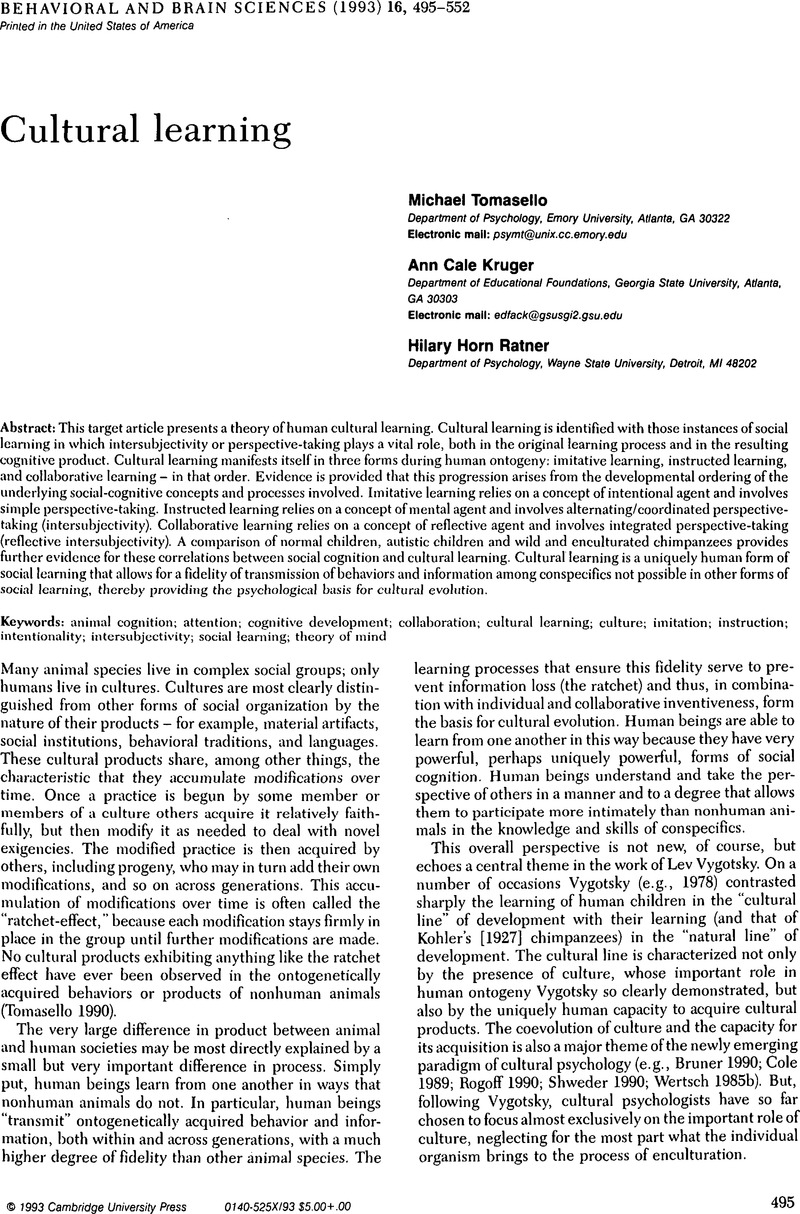Crossref Citations
This article has been cited by the following publications. This list is generated based on data provided by Crossref.
Tomasello, Michael
1996.
The Child's Contribution to Culture: A Commentary on Toomela.
Culture & Psychology,
Vol. 2,
Issue. 3,
p.
307.
Crespi, Bernard J.
2020.
The blind men and the elephant: What is missing cognitively in the study of cumulative technological evolution.
Behavioral and Brain Sciences,
Vol. 43,
Issue. ,
Cuneo, Nicole
Floyd, Sammy
and
Goldberg, Adele E.
2024.
Word meaning is complex: Language-related generalization differences in autistic adults.
Cognition,
Vol. 244,
Issue. ,
p.
105691.



